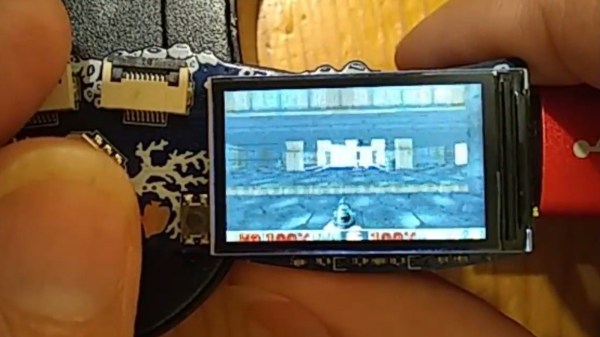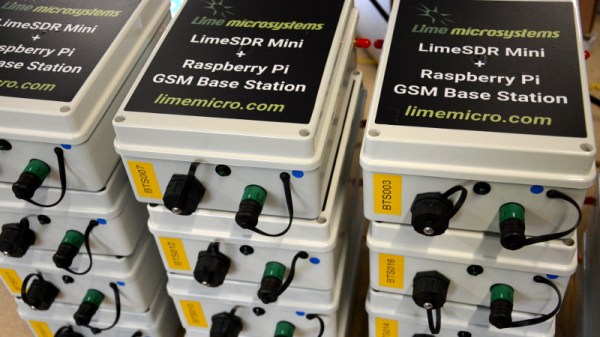Another day, another crop of newly minted minimal astronauts, as Blue Origin’s New Shepard made a successful suborbital flight this week. Everything seemed to go according to plan, at least until right at the end, when an “unexpected foliage contingency” made astronaut egress a little more complicated than usual. The New Shepard capsule had the bad taste to touch down with a bit of West Texas shrubbery directly aligned with the hatch, making it difficult to find good footing for the platform used by the astronauts for the obligatory “smile and wave” upon exiting. The Blue Origin ground crew, clad in their stylish black and blue outfits that must be murderously impractical in the West Texas desert, stamped down the brush to place the stairway, but had a lot of trouble getting it to sit straight. Even with the impromptu landscaping, the terrain made it tough to get good footing without adding random bits of stuff to prop up one leg, an important task considering that one of the new astronauts was a 90-year-old man. It seems pretty short-sighted not to have adjustable legs on the stairway, but there it is.
emfcamp5 Articles
DOOM Runs On The EMFCamp Tidal Badge
If it’s got a chip and a screen, someone’s trying to run DOOM on it. The latest entry in this fad is from [Phil Ashby], who figured out how to get the game running on the EMFCamp Tidal Badge as seamlessly as possible.
The badge is based on the ESP32-S3. It’s the latest version of the ESP32, which can run the iconic shooter pretty easily. However, [Phil] set himself a trickier challenge. He wanted to port DOOM to the badge while having it remain compatible with the MicroPython platform already on it. Plus, he wanted to be able to distribute it easily with the TiDAL Hatchery, a platform for sharing apps for the badge.
In the end, it took some deft hacking to make the game run on a microcontroller platform that isn’t really set up for running “applications.” It took some tricks to scale the video output and get the colors right, of course, but it’s there and working.
The state of the art is now so advanced that they managed to port DOOM into DOOM so you can DOOM while you DOOM. Video after the break.
The Use And Abuse Of CT Scanners
David Mills is as a research scientist at the cutting edge of medical imaging. His work doesn’t involve the scanners you might find yourself being thrust into in a hospital should you be unfortunate enough to injure yourself. He’s working with a higher grade of equipment, he pushes the boundaries of the art with much smaller, very high resolution CT scanners for research at a university dental school.
He’s also a friend of Hackaday and we were excited for his talk on interesting uses for CT scanners at EMF Camp this summer. David takes us into that world with history of these tools, a few examples of teeth and bone scans, and then delves into some of the more unusual applications to which his very specialist equipment has been applied. Join me after the break as we cover the lesser known ways to put x-ray technology to work.
Behind The Scenes Of A Hacker Conference
If you’ve been to a few hacker camps then you’re aware they are not the products of giant corporate entities but volunteer run community groups. You may even have volunteered yourself, and done all sorts of interesting tasks that go towards the running of the camp. But few of you will have been on the orga team of a camp, the people who put in the hard work of making it happen from start to finish. Julius ter Pelkwijk has, and at the 2018 Electromagnetic Field camp in the UK he gave us an insight into the experience.
Of course, Julius isn’t a member of the EMF orga, instead the camp that gave him the experience was last year’s SHA2017 in the Netherlands. This was over twice the size of EMF 2018, on the Dutch polder at Scoutinglandgoed Zeewolde, a scout camp in a forest next to a dyke, and while from our perspective it was a huge success, it was fascinating to pull back the curtain and hear from the other side of the event.
GSM Phone Network At EMF Camp Built On Raspberry Pi And LimeSDR
The Electromagnetic Field 2018 hacker camp in the UK will have its own GSM phone network, and as we have already covered its badge will be a fully-functional GSM phone. This is as far as we are aware a first in the world of badges, and though it may not be a first in hacker camp connectivity it is still no mean achievement at the base station side. To find out more we talked to two of the people behind the network, on the radio side Lime Microsystems‘ [Andrew Back], and on the network side Nexmo‘s developer advocate, [Sam Machin].
There are sixteen base stations spread around the site, of which each one is a Raspberry Pi 3 B+ with a LimeSDR Mini. Development of the system was undertaken prior to the release of the Raspberry Pi Foundation’s PoE board, so they take a separate 24V supply which powers the Pi through a DC-to-DC converter. This arrangement allows for a significant voltage drop should any long cable runs be required.
On the software side the base stations all run the Osmocom (Open Source Mobile Communications) cellular base station infrastructure package. It was a fine decision between the all-in-one Osmocom NITB package and the fully modular Osmocom, going for the former for its reliability. It was commented that this would not necessarily be the case at a future event but that it made sense in the present. It appears on the network as a SIP phone system, meaning that it can easily integrate with the existing DECT network. Let’s take a look at how the network operates from the user side, and the licencing loophole that makes everything possible.
Continue reading “GSM Phone Network At EMF Camp Built On Raspberry Pi And LimeSDR”














